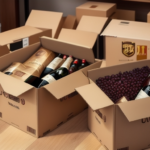How to Use FedEx Ship Manager on Linux Systems
If you're interested in using FedEx Ship Manager on Linux systems, you'll be pleased to know that the process is straightforward. This guide covers everything from the basics of the software to installation, account setup, creating shipments, managing shipping preferences, customizing labels, tracking shipments, troubleshooting common issues, best practices, and comparing other shipping software options. By following this guide, you'll be able to use FedEx Ship Manager efficiently and effectively.
Understanding the Basics of FedEx Ship Manager
FedEx Ship Manager is a comprehensive software application designed to streamline your shipping processes. It offers tools to schedule pickups, print shipping labels, manage shipping preferences, and track shipments seamlessly. The software is compatible with various operating systems, including Linux, making it a versatile choice for businesses.
One of the key advantages of using FedEx Ship Manager is its ability to save time and reduce costs by automating many manual shipping tasks. For instance, you can set up recurring shipments for regular customers, eliminating the need to re-enter shipping information each time. Additionally, the software enables you to compare shipping rates and delivery times across different carriers, ensuring you always select the most cost-effective and efficient options.
Moreover, FedEx Ship Manager integrates with other business systems such as inventory management software. This integration allows you to streamline your entire shipping process, from receiving orders to printing labels and tracking shipments. By automating these tasks, you can minimize errors and enhance overall business efficiency.
For more detailed information, visit the FedEx Ship Manager official page.
Installing FedEx Ship Manager on Linux Systems
Before installing FedEx Ship Manager, ensure your Linux system meets the following requirements:
- Compatible Linux distribution (e.g., Ubuntu, Fedora)
- Sufficient disk space and memory as specified by FedEx
- Sudo or root access to execute installation commands
Follow these steps to install FedEx Ship Manager on your Linux system:
- Download the Software: Visit the FedEx Ship Manager download page and obtain the appropriate .sh installation file for Linux.
- Set Execute Permissions: Open your terminal and run the following command to make the downloaded file executable:
sudo chmod +x /path/to/fedex-ship-manager.sh
Replace /path/to/fedex-ship-manager.sh with the actual path to your downloaded file.
- Run the Installer: Execute the installation script using the terminal:
sudo ./fedex-ship-manager.sh
Follow the on-screen prompts to complete the installation. Typically, you can accept the default installation directory /usr/local/FedEx unless you have specific requirements.
After installation, launch FedEx Ship Manager from your applications menu. If you encounter any issues, refer to the FedEx Customer Support or the troubleshooting section below.
Setting up Your FedEx Account in Ship Manager
To use FedEx Ship Manager, you must first create a FedEx account:
- Create an Account: Visit the FedEx Account Registration page and sign up for a new account.
- Log In to Ship Manager: Open FedEx Ship Manager and enter your FedEx account credentials to log in.
- Configure Account Information: Provide accurate and up-to-date information, including your company name, address, and contact details. This information is crucial for billing and shipping purposes.
- Enter Payment Information: Add a credit card or other payment method to access features like scheduling pickups and purchasing additional shipping supplies.
Ensuring your account information is accurate will help prevent issues with shipments and billing.
Creating a Shipment in FedEx Ship Manager on Linux Systems
Follow these steps to create a shipment:
- Enter Shipment Details: Input the sender's and recipient's addresses, package dimensions, weight, and select the desired shipping method.
- Select Shipping Options: Choose additional services such as insurance, delivery confirmation, or signature requirements.
- Generate Shipping Labels: Once all information is entered, FedEx Ship Manager will create the necessary shipping labels and documents.
- Review and Confirm: Double-check all shipment details to ensure accuracy before processing the shipment.
- Send Shipment: Click the "Ship" button to finalize and send the shipment for processing.
Accurate shipment information is essential to avoid delays or additional fees. Consider importing shipment data from a CSV file or integrating with your inventory system for efficiency.
Managing Shipping Preferences in FedEx Ship Manager
Customize your shipping experience by managing your preferences:
- Default Shipping Method: Set a default shipping method to speed up the shipment creation process.
- Shipping Origin and Destination: Define your default shipping origin and frequently used destinations to reduce data entry time.
- Label Preferences: Configure preferences for label formats, including adding logos or specific information.
These preferences ensure that your shipping process is tailored to your business needs, enhancing both speed and accuracy.
Additionally, FedEx Ship Manager offers real-time tracking features, allowing you to monitor the status and location of your shipments. Stay informed with proactive notifications about delivery statuses or potential delays.
Customizing Shipping Labels with FedEx Ship Manager on Linux Systems
Enhance your shipping labels to reflect your brand and improve operational efficiency:
- Add Branding Elements: Incorporate your company logo and branding colors to create a professional appearance.
- Include Specific Information: Add fields for order numbers, product details, or other identifiers to streamline internal processes.
- Adjust Label Layout: Customize the layout to include or exclude specific information based on your business needs.
Customized labels not only enhance brand recognition but also facilitate easier tracking and management of shipments.
Tracking Your Shipments with FedEx Ship Manager
Stay updated on the status of your shipments with FedEx Ship Manager's tracking features:
- Real-Time Tracking: Monitor your shipment's journey from pickup to delivery.
- Status Updates: Receive notifications on shipment status changes, including delays or delivery confirmations.
- Location Tracking: View the current location of your package on a map interface.
Additionally, the software provides various reporting options to analyze your shipping activities, track expenses, and identify areas for improvement.
Troubleshooting Common Issues with FedEx Ship Manager on Linux Systems
If you encounter issues while using FedEx Ship Manager, try the following troubleshooting steps:
- Verify System Requirements: Ensure your Linux system meets all the necessary requirements for running FedEx Ship Manager.
- Check Installation: Confirm that the software was installed correctly by reviewing installation logs and ensuring all dependencies are met.
- Network Connectivity: Make sure your internet connection is stable and that your firewall settings are not blocking the application.
- Update Software: Ensure you're using the latest version of FedEx Ship Manager to benefit from recent fixes and enhancements.
If problems persist, consult the FedEx Knowledge Base or contact FedEx Customer Support for further assistance.
Tips and Tricks for Using FedEx Ship Manager on Linux Systems Efficiently
Optimize your use of FedEx Ship Manager with these tips:
- Create Shipment Templates: Develop templates for frequent shipments to save time when processing orders.
- Utilize Batch Processing: Use the batch processing feature to create multiple shipments simultaneously, enhancing productivity.
- Set Up Approval Workflows: Implement approval workflows to ensure that all necessary personnel review and approve shipments before processing.
- Leverage the Address Book: Maintain a list of frequently used addresses to streamline the shipment creation process. Access and manage the address book via the main menu.
Implementing these strategies can significantly reduce the time and effort required to manage shipments, allowing you to focus on other critical business tasks.
Integrating Third-Party Applications with FedEx Ship Manager on Linux Systems
Enhance FedEx Ship Manager's functionality by integrating it with third-party applications:
FedEx API: FedEx offers a well-documented API that enables integration with various software applications. Access the API documentation through the FedEx Developer Resource Center.
By integrating FedEx Ship Manager with other business systems, you can automate tasks such as printing shipping labels, tracking packages, and synchronizing shipping data across platforms. This integration helps reduce manual errors and improves overall data accuracy.
To begin integrating third-party applications, ensure you have a solid understanding of the FedEx API and the necessary programming languages, such as Java or Python. Consulting with a developer or utilizing FedEx's support resources can facilitate a smooth integration process.
Comparing Other Shipping Software Options to FedEx Ship Manager on Linux Systems
While FedEx Ship Manager is a powerful tool for managing FedEx shipments, it's important to consider other shipping software options to meet your specific business needs:
UPS WorldShip: UPS WorldShip offers comprehensive features for managing UPS shipments, including label printing, shipment tracking, and integration with other business systems. It is known for its robust functionality and user-friendly interface.
Endicia: Endicia provides shipping solutions tailored for e-commerce businesses, supporting USPS and other carriers. It offers features like label creation, shipping rate comparison, and order management, making it a suitable choice for online retailers.
ShipStation: ShipStation is a multi-carrier shipping software that allows you to compare rates and services from various carriers, including FedEx, UPS, USPS, and more. It offers a flexible and scalable solution, ideal for businesses that work with multiple shipping providers.
When selecting the right shipping software, consider factors such as ease of integration, supported carriers, feature set, pricing, and customer support. Conduct thorough research and, if possible, take advantage of free trials to determine which software best aligns with your business requirements.
By following this comprehensive guide, you'll be well-equipped to use FedEx Ship Manager on your Linux system effectively. This software can help streamline your shipping processes, save time, and improve delivery efficiency. Remember to utilize FedEx's customer support and resources if you encounter any challenges.
While FedEx Ship Manager is ideal for businesses primarily using FedEx, multi-carrier solutions like ShipStation or Shippo may offer greater flexibility for those shipping with various carriers. These platforms provide better rate comparisons and a broader range of shipping options, though they might require a steeper learning curve and more initial setup.




















